Advancing Three-Dimensional Coupled Water Quality Model of Marine Ranches: Model Development, Global Sensitivity Analysis, and Optimization Based on Observation System
Abstract
:1. Introduction
2. Methods
2.1. Water Quality Model
2.2. Global Sensitivity Analysis
2.2.1. Discretization
2.2.2. Sampling
2.2.3. Elemental Effect
2.3. Parameter Optimization
2.4. Numerical Experiment Design
2.4.1. Model Settings
2.4.2. Data Descriptions
3. Results and Discussion
3.1. Simulation Results
- (1)
- GSA was applied to the parameters to determine the sensitive parameters and summarize their effects on different state variables;
- (2)
- The sensitive parameters were optimized and the effects of optimization on the model results were analyzed.
3.2. GSA Results
3.3. Parameter Optimization
4. Conclusions
Author Contributions
Funding
Institutional Review Board Statement
Informed Consent Statement
Data Availability Statement
Conflicts of Interest
Appendix A
Appendix B
References
- Yu, J.; Zhang, L. Evolution of Marine Ranching Policies in China: Review, Performance and Prospects. Sci. Total Environ. 2020, 737, 139782. [Google Scholar] [CrossRef] [PubMed]
- Du, Y.W.; Jiang, J.; Li, C.H. Ecological Efficiency Evaluation of Marine Ranching Based on the Super-SBM Model: A Case Study of Shandong. Ecol. Indic. 2021, 131, 108174. [Google Scholar] [CrossRef]
- Liu, S.M.; Li, X.N.; Zhang, J.; Wei, H.; Ren, J.L.; Zhang, G.L. Nutrient Dynamics in Jiaozhou Bay. Water Air Soil Pollut. Focus 2007, 7, 625–643. [Google Scholar] [CrossRef]
- Lu, D.; Li, K.; Liang, S.; Lin, G.; Wang, X. A Coastal Three-Dimensional Water Quality Model of Nitrogen in Jiaozhou Bay Linking Field Experiments with Modelling. Mar. Pollut. Bull. 2017, 114, 53–63. [Google Scholar] [CrossRef]
- Liu, Y.Z.; Shen, Y.L.; Lv, X.Q.; Liu, Q. Numeric Modelling and Risk Assessment of Pollutions in the Chinese Bohai Sea. Sci. China Earth Sci. 2017, 60, 1546–1557. [Google Scholar] [CrossRef]
- Friedrichs, M.A.M.; Dusenberry, J.A.; Anderson, L.A.; Armstrong, R.A.; Chai, F.; Christian, J.R.; Doney, S.C.; Dunne, J.; Fujii, M.; Hood, R.; et al. Assessment of Skill and Portability in Regional Marine Biogeochemical Models: Role of Multiple Planktonic Groups. J. Geophys. Res. Ocean. 2007, 112, 1–22. [Google Scholar] [CrossRef]
- Cossarini, G.; Solidoro, C. Global Sensitivity Analysis of a Trophodynamic Model of the Gulf of Trieste. Ecol. Modell. 2008, 212, 16–27. [Google Scholar] [CrossRef]
- Morris, D.J.; Speirs, D.C.; Cameron, A.I.; Heath, M.R. Global Sensitivity Analysis of an End-to-End Marine Ecosystem Model of the North Sea: Factors Affecting the Biomass of Fish and Benthos. Ecol. Modell. 2014, 273, 251–263. [Google Scholar] [CrossRef]
- Shen, C.; Shi, H.; Liu, Y.; Li, F.; Ding, D. Discussion of Skill Improvement in Marine Ecosystem Dynamic Models Based on Parameter Optimization and Skill Assessment. Chin. J. Oceanol. Limnol. 2016, 34, 683–696. [Google Scholar] [CrossRef]
- Morris, M.D. Factorial Sampling Plans for Preliminary Computational Experiments. Technometrics 1991, 33, 161–174. [Google Scholar] [CrossRef]
- Zhao, Q.; Lu, X. Parameter Estimation in a Three-Dimensional Marine Ecosystem Model Using the Adjoint Technique. J. Mar. Syst. 2008, 74, 443–452. [Google Scholar] [CrossRef]
- Fan, W.; Lv, X. Data Assimilation in a Simple Marine Ecosystem Model Based on Spatial Biological Parameterizations. Ecol. Modell. 2009, 220, 1997–2008. [Google Scholar] [CrossRef]
- Fennel, K.; Gehlen, M.; Brasseur, P.; Brown, C.W.; Ciavatta, S.; Cossarini, G.; Crise, A.; Edwards, C.A.; Ford, D.; Friedrichs, M.A.M.; et al. Advancing Marine Biogeochemical and Ecosystem Reanalyses and Forecasts as Tools for Monitoring and Managing Ecosystem Health. Front. Mar. Sci. 2019, 6, 89. [Google Scholar] [CrossRef]
- Fennel, K.; Wilkin, J.; Levin, J.; Moisan, J.; O’Reilly, J.; Haidvogel, D. Nitrogen Cycling in the Middle Atlantic Bight: Results from a Three-Dimensional Model and Implications for the North Atlantic Nitrogen Budget. Global Biogeochem. Cycles 2006, 20, 1–14. [Google Scholar] [CrossRef]
- Li, K.; Zhang, L.L.L.; Li, Y.; Zhang, L.L.L.; Wang, X. A Three-Dimensional Water Quality Model to Evaluate the Environmental Capacity of Nitrogen and Phosphorus in Jiaozhou Bay, China. Mar. Pollut. Bull. 2015, 91, 306–316. [Google Scholar] [CrossRef]
- Eppley, R. Temperature and Phytoplankton Growth in the Sea. Fish. Bull. 1972, 70, 1063–1085. [Google Scholar]
- Steele, J.H. Environmental Control of Photosynthesis in the Sea. Limnol. Oceanogr. 1962, 7, 137–150. [Google Scholar] [CrossRef]
- Michaels, A.F.; Olson, D.; Sarmiento, J.L.; Ammerman, J.W.; Fanning, K.; Jahnke, R.; Knap, A.H.; Lipschultz, F.; Prospero, J.M. Inputs, Losses and Transformations of Nitrogen and Phosphorus in the Pelagic North Atlantic Ocean. Biogeochemistry 1996, 35, 181–226. [Google Scholar] [CrossRef]
- Fu, K.; Liang, D. The Conservative Characteristic FD Methods for Atmospheric Aerosol Transport Problems. J. Comput. Phys. 2016, 305, 494–520. [Google Scholar] [CrossRef]
- Xu, M.; Fu, K.; Lv, X. Application of Adjoint Data Assimilation Method to Atmospheric Aerosol Transport Problems. Adv. Math. Phys. 2017, 2017, 5865403. [Google Scholar] [CrossRef]
- Wolfe, P. Convergence Conditions for Ascent Methods. SIAM Rev. 1969, 11, 226–235. [Google Scholar] [CrossRef]
- Wolfe, P. Convergence Conditions for Ascent Methods. II: Some Corrections. SIAM Rev. 1971, 13, 185–188. [Google Scholar] [CrossRef]
- Shchepetkin, A.F.; McWilliams, J.C. The Regional Oceanic Modeling System (ROMS): A Split-Explicit, Free-Surface, Topography-Following-Coordinate Oceanic Model. Ocean Model. 2005, 9, 347–404. [Google Scholar] [CrossRef]
- Woodruff, S.D.; Diaz, H.F.; Elms, J.D.; Worley, S.J. COADS Release 2 Data and Metadata Enhancements for Improvements of Marine Surface Flux Fields. Phys. Chem. Earth 1998, 23, 517–526. [Google Scholar] [CrossRef]
- Egbert, G.D.; Erofeeva, S.Y. Efficient Inverse Modeling of Bortropic Ocean Tides. J. Atmos. Ocean. Technol. 2002, 19, 183–204. [Google Scholar] [CrossRef]
- Yao, Z.; He, R.; Bao, X.; Wu, D.; Song, J. M 2 Tidal Dynamics in Bohai and Yellow Seas: A Hybrid Data Assimilative Modeling Study. Ocean Dyn. 2012, 62, 753–769. [Google Scholar] [CrossRef]
- Bian, C.; Jiang, W.; Greatbatch, R.J. An Exploratory Model Study of Sediment Transport Sources and Deposits in the Bohai Sea, Yellow Sea, and East China Sea. J. Geophys. Res. Ocean. 2013, 118, 5908–5923. [Google Scholar] [CrossRef]
- Cao, R.; Chen, H.; Rong, Z.; Lv, X. Impact of Ocean Waves on Transport of Underwater Spilled Oil in the Bohai Sea. Mar. Pollut. Bull. 2021, 171, 112702. [Google Scholar] [CrossRef]
- Li, Y.; Cao, R.; Chen, H.; Mu, L.; Lv, X. Impact of Oil−sediment Interaction on Transport of Underwater Spilled Oil in the Bohai Sea. Ocean Eng. 2022, 247, 110687. [Google Scholar] [CrossRef]
- Liu, Y.; Yu, J.; Shen, Y.; Lv, X. A Modified Interpolation Method for Surface Total Nitrogen in the Bohai Sea. J. Atmos. Ocean. Technol. 2016, 33, 1509–1517. [Google Scholar] [CrossRef]
- Loneragan, N.R.; Jenkins, G.I.; Taylor, M.D. Marine Stock Enhancement, Restocking, and Sea Ranching in Australia: Future Directions and a Synthesis of Two Decades of Research and Development. Rev. Fish. Sci. 2013, 21, 222–236. [Google Scholar] [CrossRef]
- Grant, W.S.; Jasper, J.; Bekkevold, D.; Adkison, M. Responsible Genetic Approach to Stock Restoration, Sea Ranching and Stock Enhancement of Marine Fishes and Invertebrates. Rev. Fish Biol. Fish. 2017, 27, 615–649. [Google Scholar] [CrossRef]
- Dobson, F.W.; Smith, S.D. Bulk models of solar radiation at sea. Quarter. J. R. Meteorol. Soc. 1988, 114, 165–182. [Google Scholar] [CrossRef]
- Radach, G.; Moll, A. Estimation of the Variability of Production by Simulating Annual Cycles of Phytoplankton in the Central North Sea. Prog. Oceanogr. 1993, 31, 339–419. [Google Scholar] [CrossRef]
- Chapelle, A.; Lazure, P.; Ménesguen, A. Modelling Eutrophication Events in a Coastal Ecosystem. Sensitivity Analysis. Estuar. Coast. Shelf Sci. 1994, 39, 529–548. [Google Scholar] [CrossRef]
- Dueri, S.; Dahllöf, I.; Hjorth, M.; Marinov, D.; Zaldívar, J.M. Modeling the Combined Effect of Nutrients and Pyrene on the Plankton Population: Validation Using Mesocosm Experiment Data and Scenario Analysis. Ecol. Modell. 2009, 220, 2060–2067. [Google Scholar] [CrossRef]
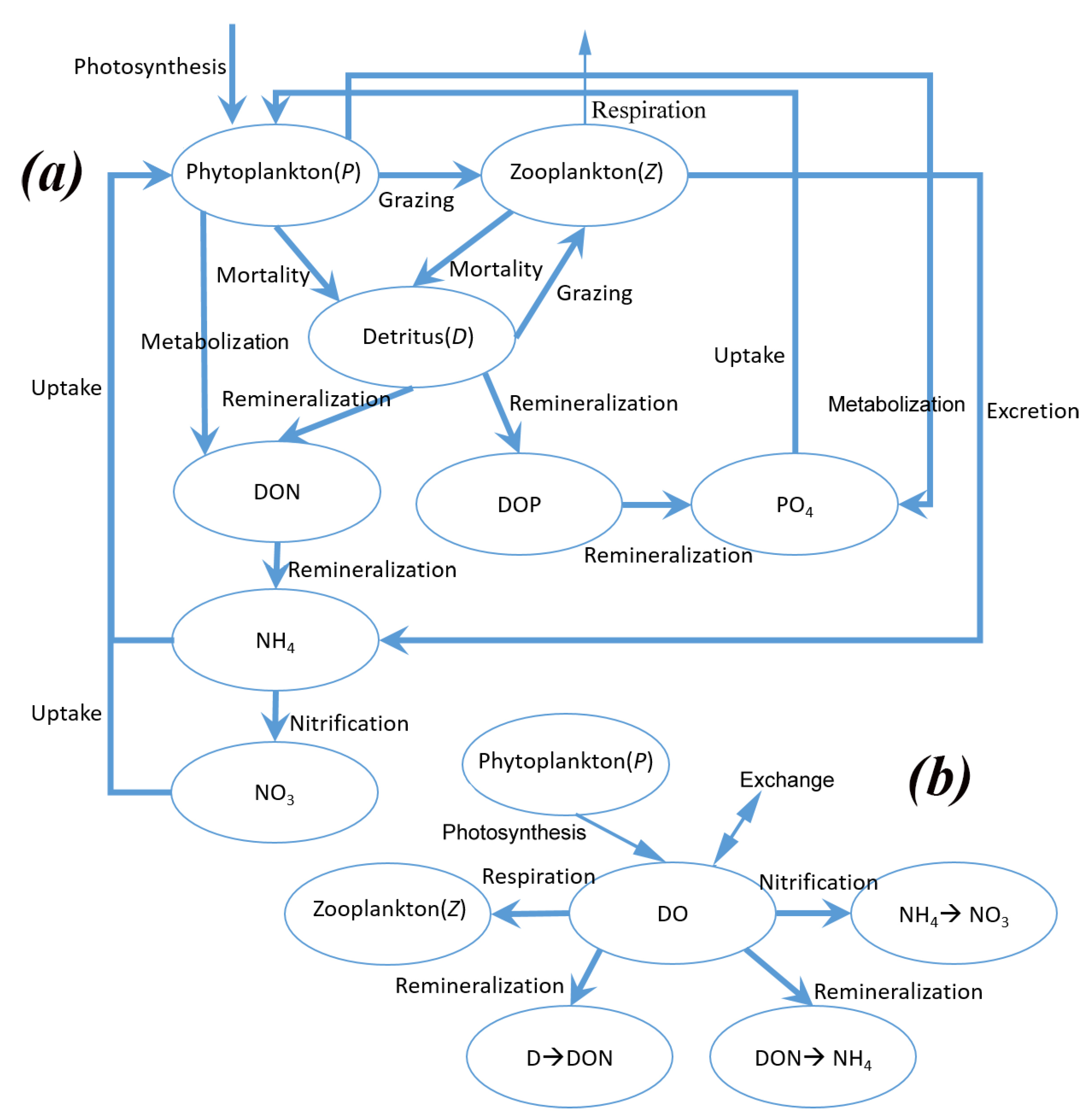

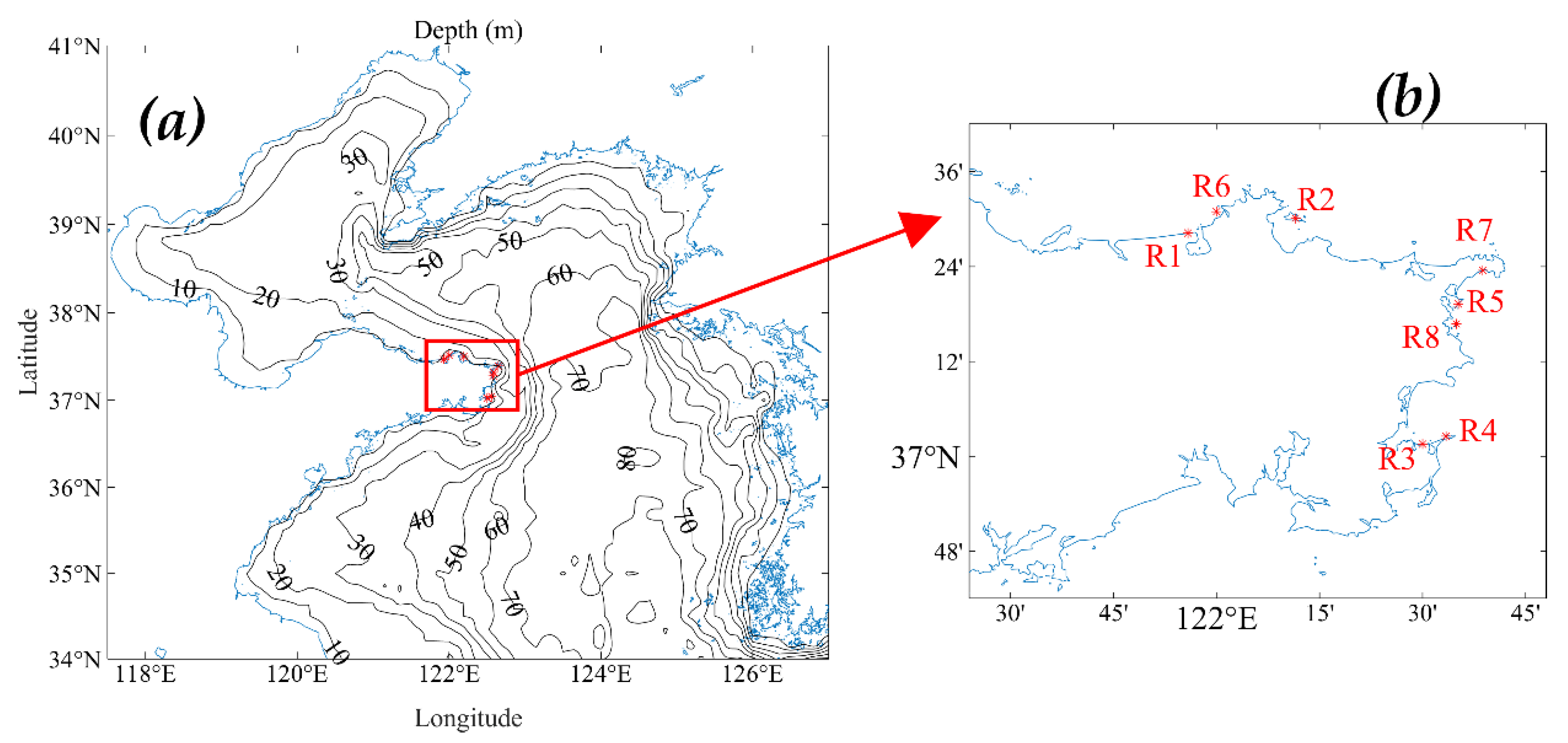
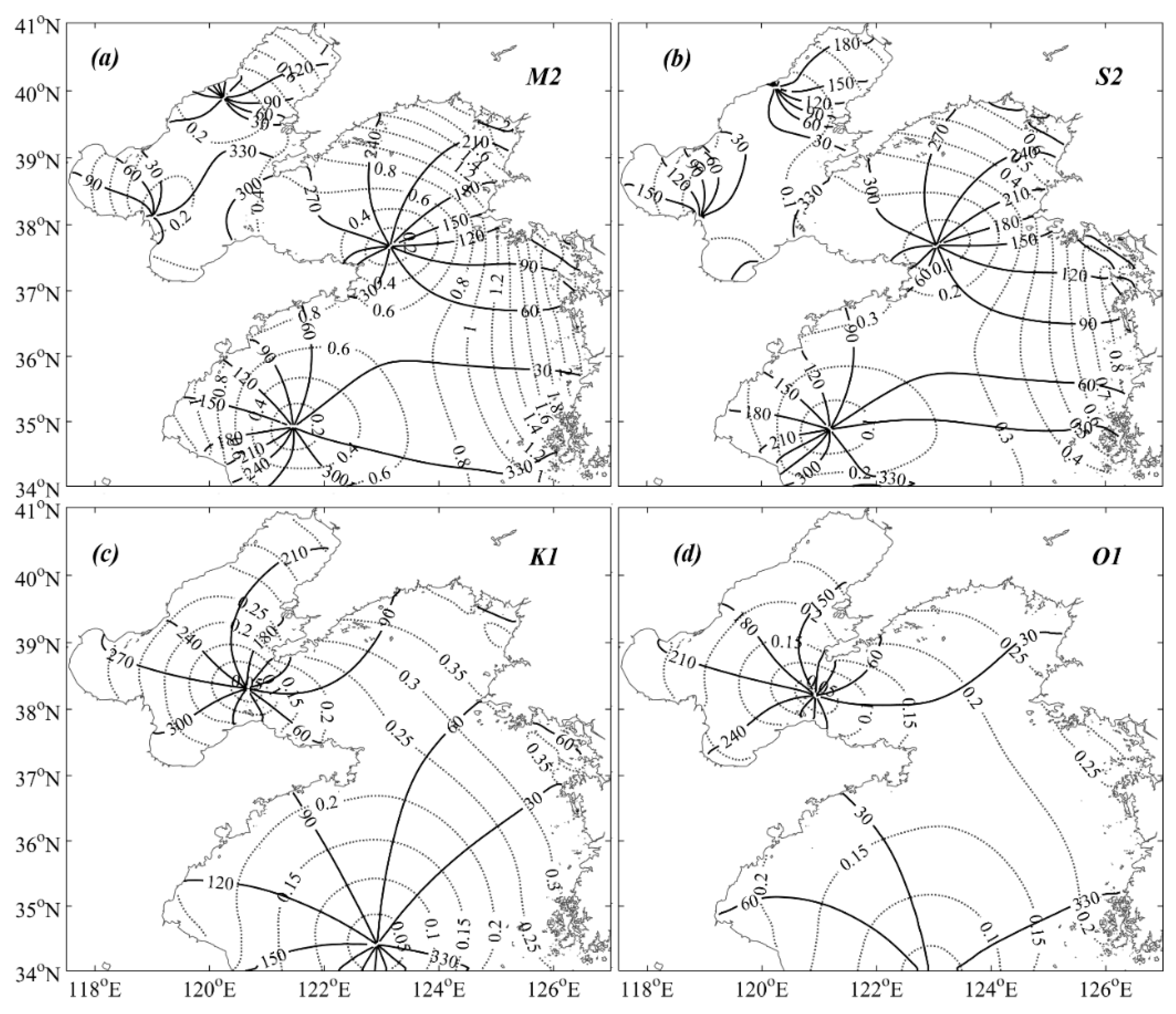
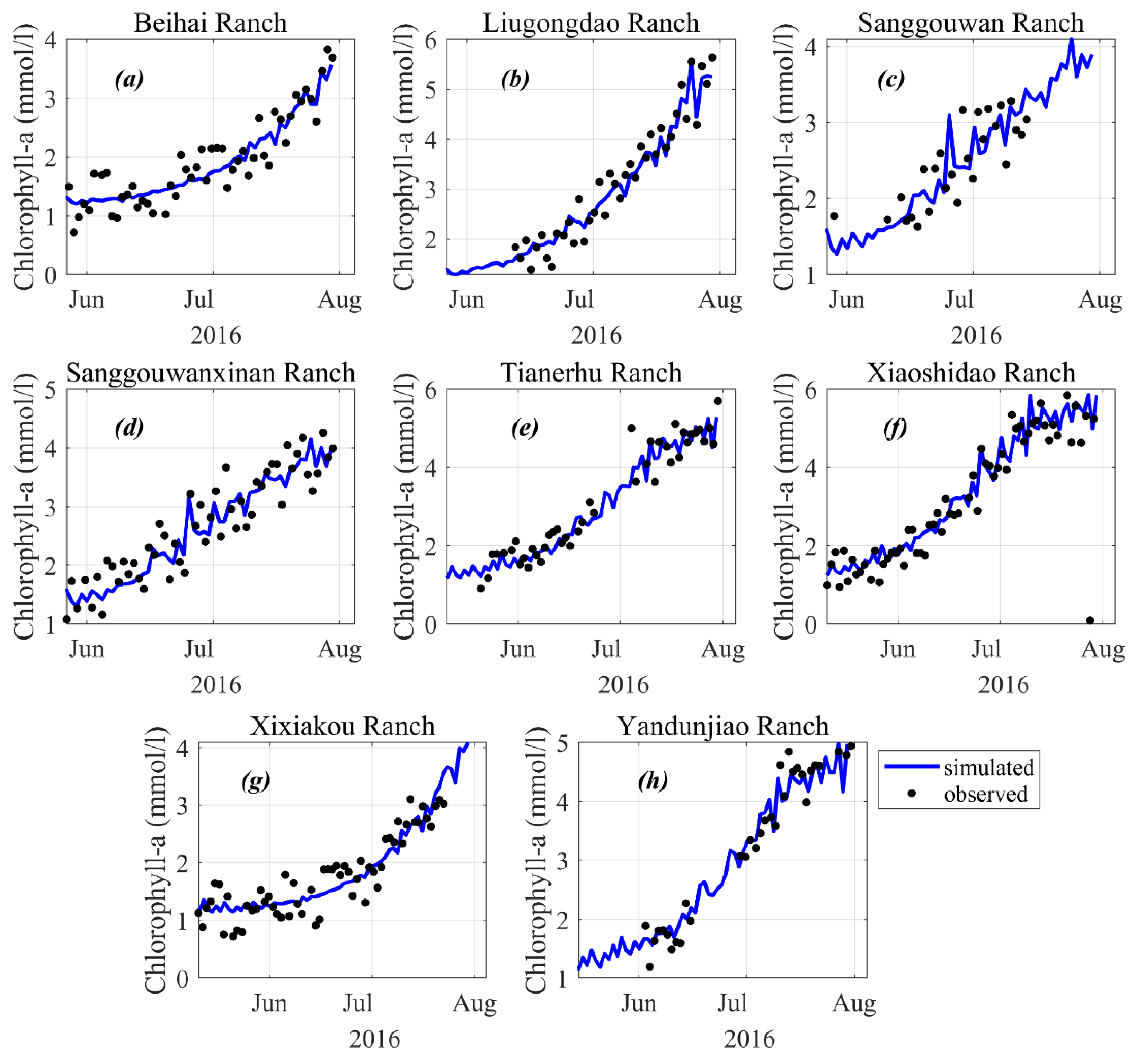
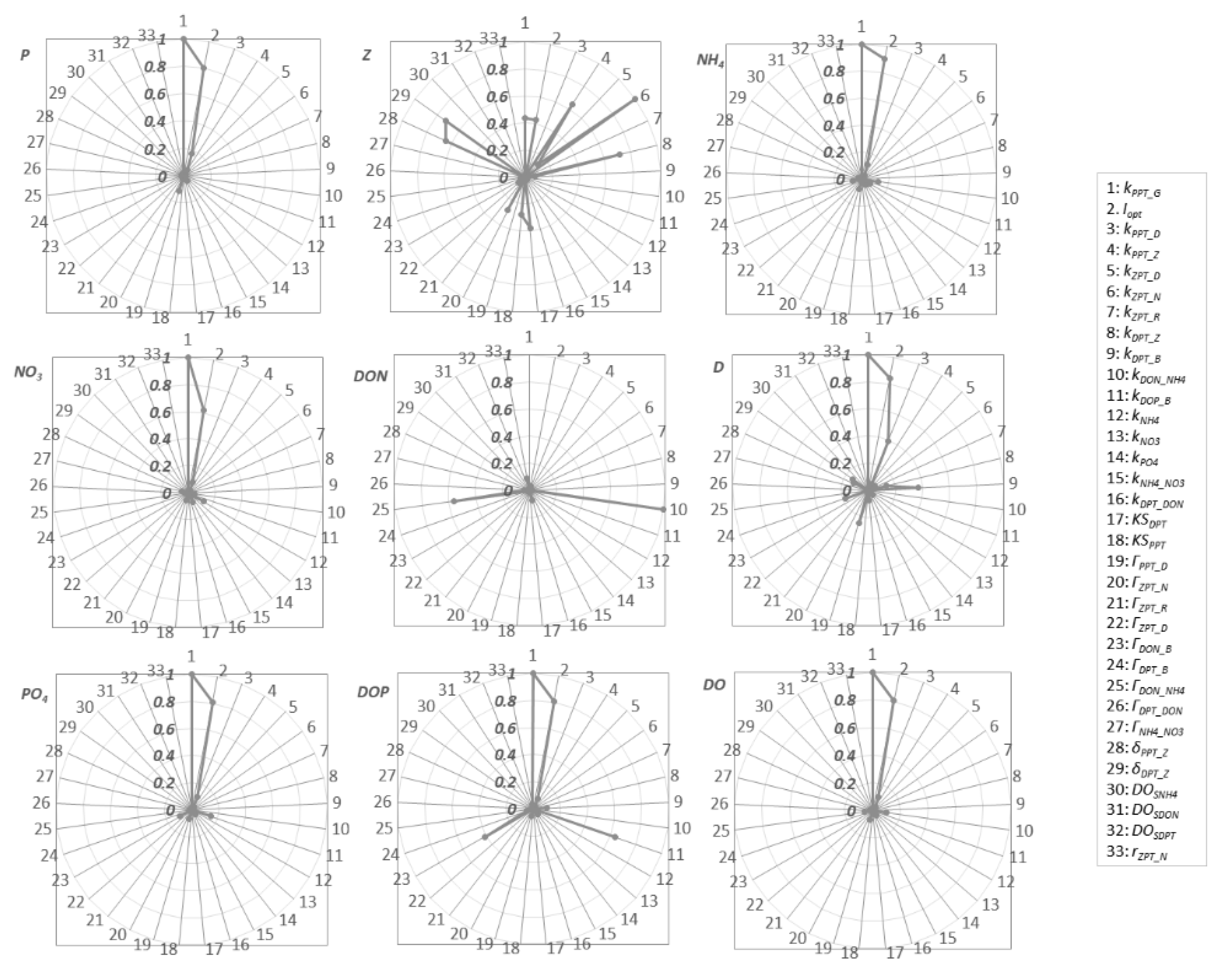

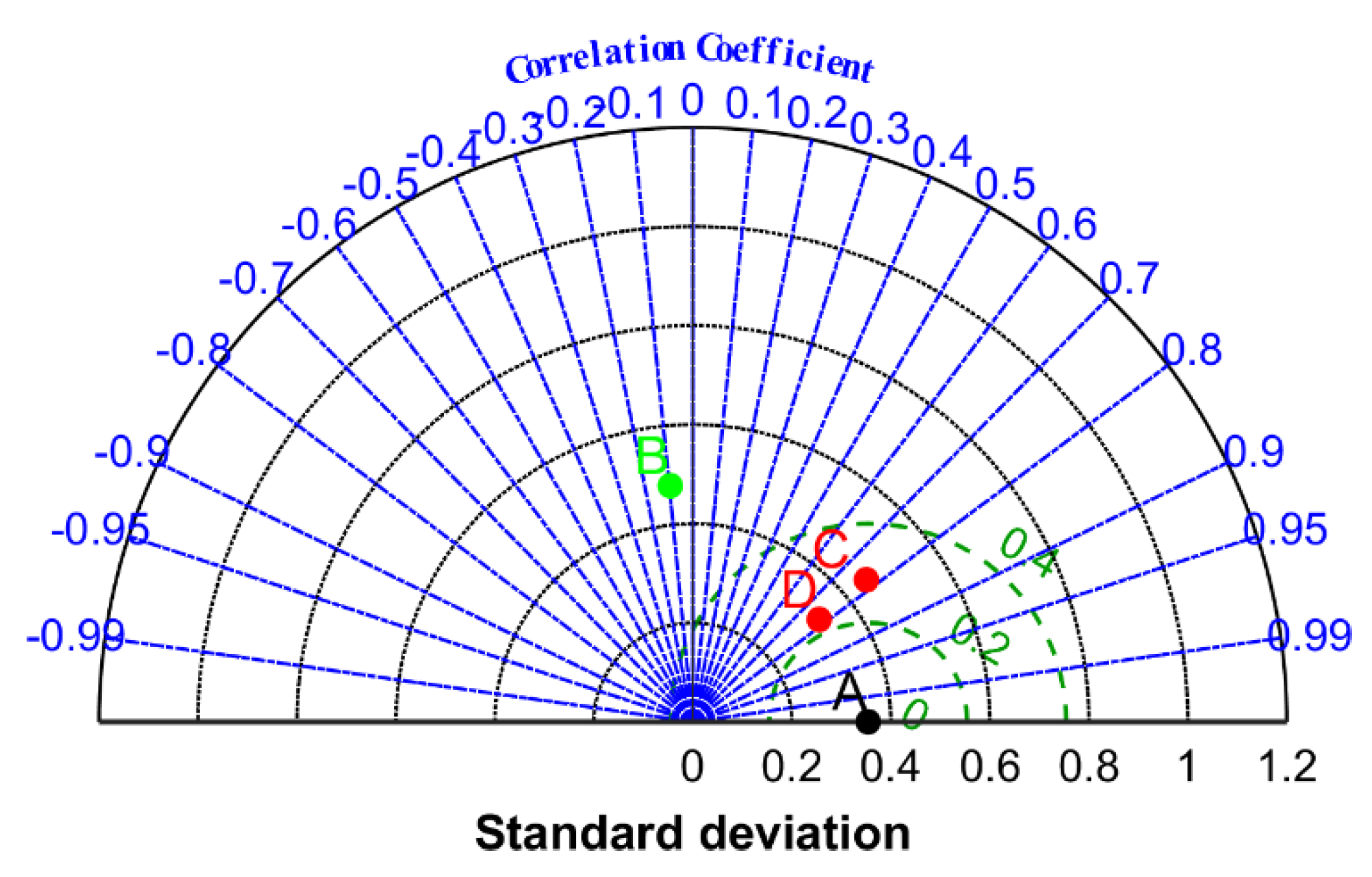

| Symbol | Description | Value | Confidence Interval | Unit |
|---|---|---|---|---|
| ρ | Photosynthetically active irradiance fraction of the total solar irradiance | 0.43 | 0.301–0.559 | — |
| Iopt | Optimal light irradiance | 72.5 | 50.750–94.250 | W/m2 |
| kPPT_G | Maximum phytoplankton growth rate | 0.8 | 0.560–1.040 | 1/day |
| kPPT_D | Mortality rate of phytoplankton | 0.05 | 0.035–0.065 | 1/day |
| kPPT_Z | Zooplankton grazing rate on phytoplankton | 0.4 | 0.280–0.520 | 1/day |
| kZPT_D | Mortality rate of zooplankton | 0.05 | 0.035–0.065 | 1/day |
| kZPT_N | Excretion rate of zooplankton | 0.2 | 0.140–0.260 | 1/day |
| kZPT_F | Grazed rate of zooplankton by fish | 0.1 | 0.070–0.130 | 1/day |
| kZPT_R | Respiration rate of ZPT at 0 °C | 0.03 | 0.021–0.039 | 1/day |
| kDPT_Z | Zooplankton grazing rate on detritus | 0.6 | 0.420–0.780 | 1/day |
| kDPT_B | Detritus remineralization rate | 0.05 | 0.035–0.065 | 1/day |
| kDON_NH4 | The remineralization rate of DON at 0 °C | 0.027 | 0.019–0.035 | 1/day |
| kDOP_B | Dissolved organic phosphorus remineralization rate | 0.04 | 0.028–0.052 | 1/day |
| kNH4 | Half-saturation concentration for ammonium | 0.5 | 0.35–0.65 | mmolN/m3 |
| kNO3 | Half-saturation concentration for nitrate | 0.5 | 0.35–0.65 | mmolN/m3 |
| kPO4 | Half-saturation concentration for phosphorus | 0.03 | 0.021–0.039 | mmolP/m3 |
| kNH4_NO3 | Oxidation rate of NH4-N at 0 °C | 0.053 | 0.037–0.069 | 1/day |
| kDPT_DON | Degradation rate of PN at 0 °C | 0.01 | 0.007–0.013 | 1/day |
| KSNO3 | Half-saturation constant for nitrate | 0.5 | 0.350–0.650 | mmolN/m3 |
| KSNH4 | Half-saturation concentration for ammonium | 0.5 | 0.350–0.650 | mmolN/m3 |
| KSPO4 | Half-saturation constant for phosphorus | 0.03 | 0.021–0.039 | mmolP/m3 |
| KSDPT | Half-saturation constant for detritus limitation | 0.7 | 0.490–0.910 | mmolN/m3 |
| KSPPT | Half-saturation constant for ingestion | 0.6 | 0.420–0.780 | mmolN/m3 |
| Pthre | Threshold for overgrazing on phytoplankton | 0.12 | 0.084–0.156 | mmolN/m3 |
| ГPPT_G | Temperature coefficient for phytoplankton growth | 0.065 | 0.046–0.085 | 1/°C |
| ГPPT_D | Temperature coefficient for phytoplankton mortality | 0.065 | 0.046–0.085 | 1/°C |
| ГZPT_N | Temperature coefficient for zooplankton excretion | 0.027 | 0.019–0.035 | 1/°C |
| ГZPT_R | Temperature coefficient for the respiration of ZPT | 0.061 | 0.043–0.0793 | 1/°C |
| ГZPT_D | Temperature coefficient for zooplankton mortality | 0.05 | 0.350–0.650 | 1/°C |
| ГDON_B | Temperature coefficient for dissolved organic nutrient remineralization | 0.065 | 0.046–0.085 | 1/°C |
| ГDPT_B | Temperature coefficient for detritus remineralization | 0.05 | 0.350–0.650 | 1/°C |
| ГDON_NH4 | The temperature coefficient for the remineralization of DON | 0.056 | 0.039–0.073 | °C |
| ГDPT_DON | Temperature coefficient for the degradation of PN | 0.063 | 0.044–0.082 | °C |
| ГNH4_NO3 | Temperature coefficient for the oxidation of NH4-N | 0.062 | 0.043–0.081 | °C |
| δPPT_Z | Assimilation efficiency for phytoplankton | 0.8 | 0.560–1.040 | — |
| δDPT_Z | Assimilation efficiency for detritus | 0.7 | 0.490–0.910 | — |
| DOSNH4 | Half-saturation constant of NH4 oxidation consumption dissolved oxygen | 0.5 | 0.350–0.650 | mg/L |
| DOSDON | Half-saturation constant of NH4 transform consumption dissolved oxygen | 1.0 | 0.700–1.300 | mg/L |
| DOSDPT | Half-saturation constant of DPT transform consumption dissolved oxygen | 1.0 | 0.700–1.300 | mg/L |
| rZPT_N | Inorganic nutrient fraction of the excretion of zooplankton | 0.75 | 0.525–0.975 | |
| Q0 | Solar constant | 1368 | - | W/m2 |
| R | Albedo of sea surface | 0.378 | - | — |
| lk0 | Coefficient of light extinction | 0.8 | - | 1/m |
| lk1 | Coefficient of light extinction | 0.0088 | - | 1/m (mg/Chla) |
| lk2 | Coefficient of light extinction | 0.054 | - | 1/m (mg/Chla)2/3 |
| Kext | Light attenuation coefficient | 0.1 | 0.07–0.13 | m−1 |
| rChl/PN | Chla/N ratio | 1.6 | -- | mg Chla/(mmol N) |
| rN_P | N/P ratio in phytoplankton and zooplankton | 16 | -- | mmol N/(mmol P) |
| μSDO | DO exchange in bottom water | 0.8 | 0.560–1.040 | mg/m2/day |
| ГZPT_R | Temperature coefficient for the respiration of ZPT | 0.061 | 0.043–0.079 | °C |
| Station | MAE (mmol/L) |
|---|---|
| Beihai Ranch | 0.25 |
| Liugongdao Ranch | 0.24 |
| Sanggouwan Ranch | 0.25 |
| Sanggouwanxinan Ranch | 0.27 |
| Tianerhu Ranch | 0.22 |
| Xiaoshidao Ranch | 0.27 |
| Xixiakou Ranch | 0.25 |
| Yandunjiao Ranch | 0.18 |
Publisher’s Note: MDPI stays neutral with regard to jurisdictional claims in published maps and institutional affiliations. |
© 2022 by the authors. Licensee MDPI, Basel, Switzerland. This article is an open access article distributed under the terms and conditions of the Creative Commons Attribution (CC BY) license (https://creativecommons.org/licenses/by/4.0/).
Share and Cite
Liu, Y.; Jiang, F.; Zhao, Z.; Tana; Lv, X. Advancing Three-Dimensional Coupled Water Quality Model of Marine Ranches: Model Development, Global Sensitivity Analysis, and Optimization Based on Observation System. J. Mar. Sci. Eng. 2022, 10, 1028. https://doi.org/10.3390/jmse10081028
Liu Y, Jiang F, Zhao Z, Tana, Lv X. Advancing Three-Dimensional Coupled Water Quality Model of Marine Ranches: Model Development, Global Sensitivity Analysis, and Optimization Based on Observation System. Journal of Marine Science and Engineering. 2022; 10(8):1028. https://doi.org/10.3390/jmse10081028
Chicago/Turabian StyleLiu, Yongzhi, Fan Jiang, Zihan Zhao, Tana, and Xianqing Lv. 2022. "Advancing Three-Dimensional Coupled Water Quality Model of Marine Ranches: Model Development, Global Sensitivity Analysis, and Optimization Based on Observation System" Journal of Marine Science and Engineering 10, no. 8: 1028. https://doi.org/10.3390/jmse10081028





